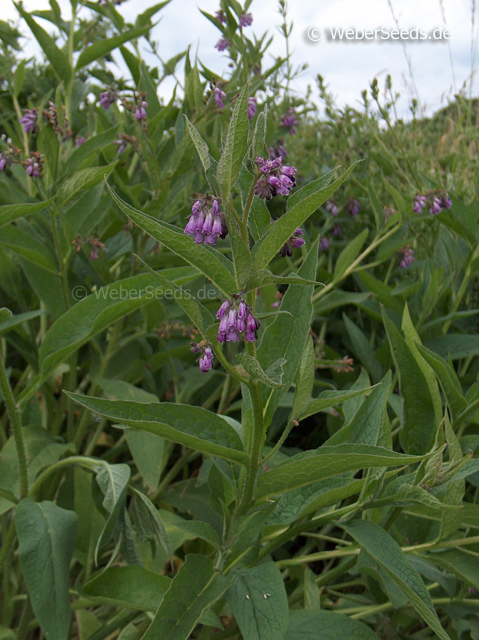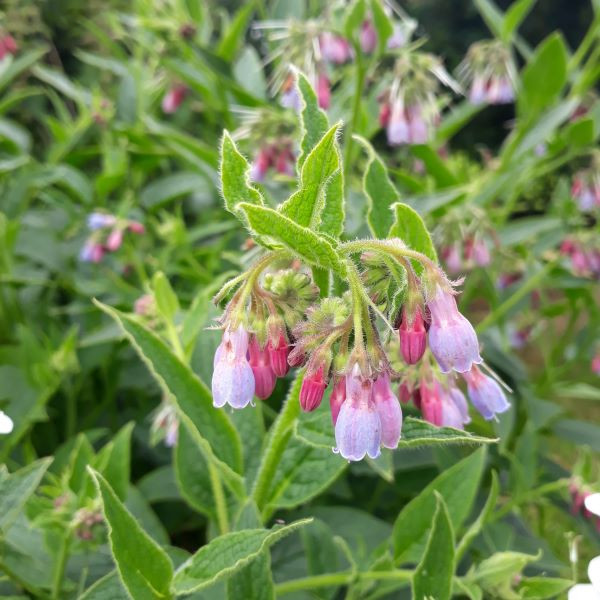
Pyrrolizidine Alkaloids: Chemistry, Pharmacology, Toxicology and Food Safety. Moreira R, Pereira DM, Valentão P, Andrade PB.

_1.jpg)
A critical scoping review of external uses of comfrey (Symphytum spp.). Transcriptomic profiling for safety and toxicity evaluation of nutraceuticals. Comfrey root: from tradition to modern clinical trials. In: Toxicological Survey of African Medicinal Plants. Subchronic and chronic toxicities of african medicinal plants. Treatment with 4Jointz reduces knee pain over 12 weeks of treatment in patients with clinical knee osteoarthritis: a randomised controlled trial. Laslett LL, Quinn SJ, Darian-Smith E, et al. Effect of a blend of comfrey root extract (Symphytum officinale L.) and tannic acid creams in the treatment of osteoarthritis of the knee: randomized, placebo-controlled, double-blind, multiclinical trials. Topical herbal therapies for treating osteoarthritis. Efficacy and safety of comfrey root extract ointment in the treatment of acute upper or lower back pain: results of a double-blind, randomised, placebo-controlled, multicentre trial.

Giannetti BM, Staiger C, Bulitta M, Predel HG. Comfrey.ĭrugs and Lactation Database, National Library of Medicine. National Library of Medicine, National Institutes of Health. A systematic review and quality assessment of case reports of adverse events for borage (Borago officinalis), coltsfoot (Tussilago farfara) and comfrey (Symphytum officinale). doi:10.3390/molecules24122272Īvila C, Breakspear I, Hawrelak J, Salmond S, Evans S. Symphytum species: A comprehensive review on chemical composition, food applications and phytopharmacology. Common name of comfrey reportedly comes from con firma (Latin meaning with strength) in reference to its reputation for healing wounds and broken bones (leaves and roots contain allantoin).Salehi B, Sharopov F, Boyunegmez Tumer T, et al. Specific epithet means sold in shops and was often applied to plants with supposed medicinal properties. Genus name comes from the Greek words symphyo meaning to grow together and phyton for plant as the plant was believed to help heal wounds. Although some controversy still exists regarding internal use, plants are now generally considered by most experts to be unsafe and dangerous for ingestion. Leaves were also once used for herbal teas. Young leaves and stems were once cooked as a vegetable (like spinach). Internally, comfrey has been used to treat a number of other medical problems including ulcers and colitis. Leaves and roots have been used for many years in poultices for treating a variety of external inflammations, rashes, swellings, cuts, bruises, sprains or broken bones.

Over time, comfrey has naturalized along roadsides and in waste areas throughout much of the U.S. Immigrants first brought the plant to America in the 1600s for medicinal use. Comfrey (also commonly called knitbone or boneset) has been cultivated since 400 B. Tubular, bluebell-like, white to pink to purple flowers appear in drooping clusters (scorpiod cymes) in mid-spring to early summer. Upper leaves are decurrent and much smaller than the basal ones. Large, pointed, hairy, ovate-lanceolate, dark green basal leaves grow to 8” long. Symphytum officinale, commonly called comfrey, is a large, coarse, tuberous-rooted, clumping perennial (to 3’ tall and 2.5’ wide) that is primarily grown today as an ornamental for its attractive foliage and spring flowers.


 0 kommentar(er)
0 kommentar(er)
